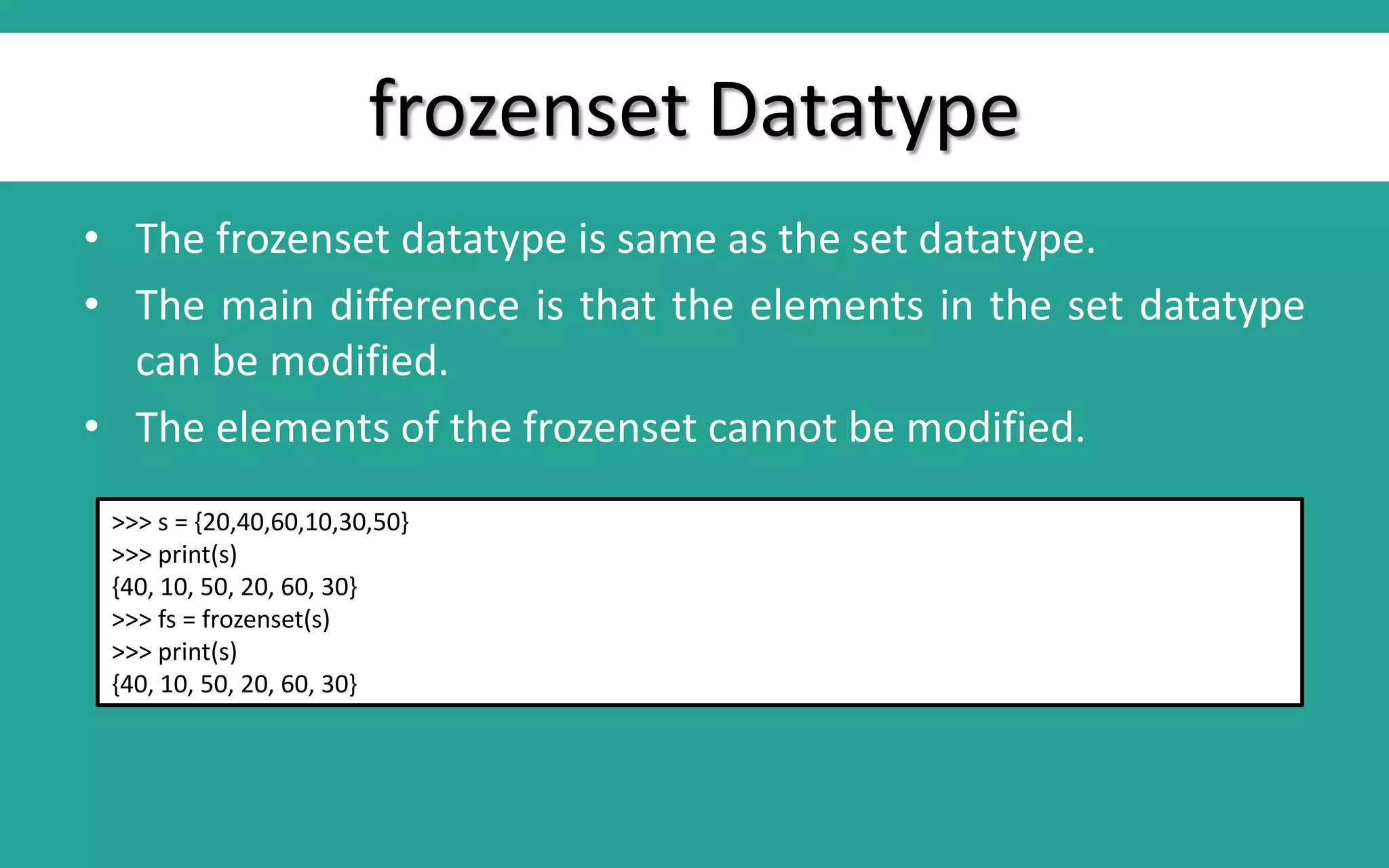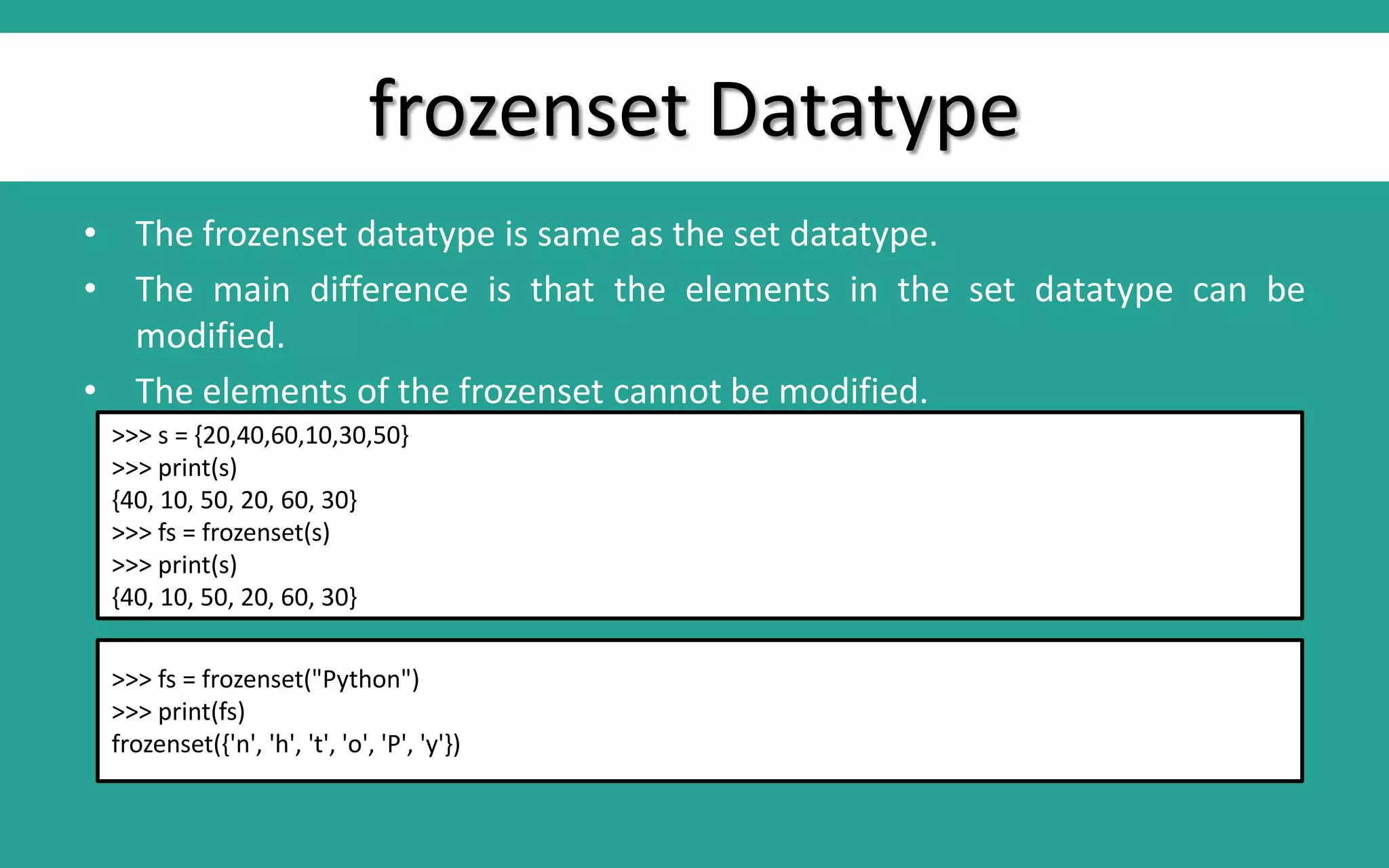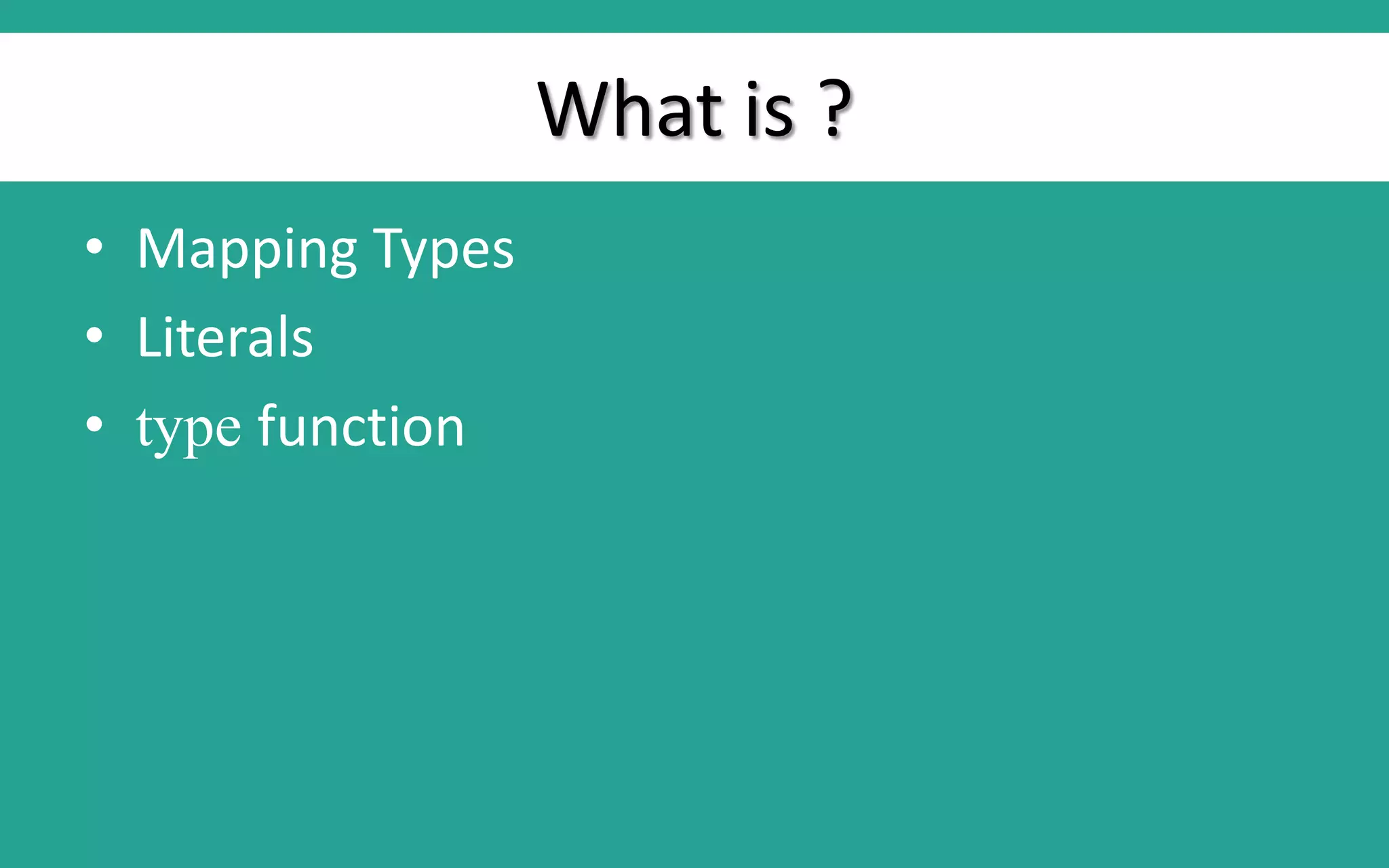The document discusses various Python datatypes. It explains that Python supports built-in and user-defined datatypes. The main built-in datatypes are None, numeric, sequence, set and mapping types. Numeric types include int, float and complex. Common sequence types are str, bytes, list, tuple and range. Sets can be created using set and frozenset datatypes. Mapping types represent a group of key-value pairs like dictionaries.
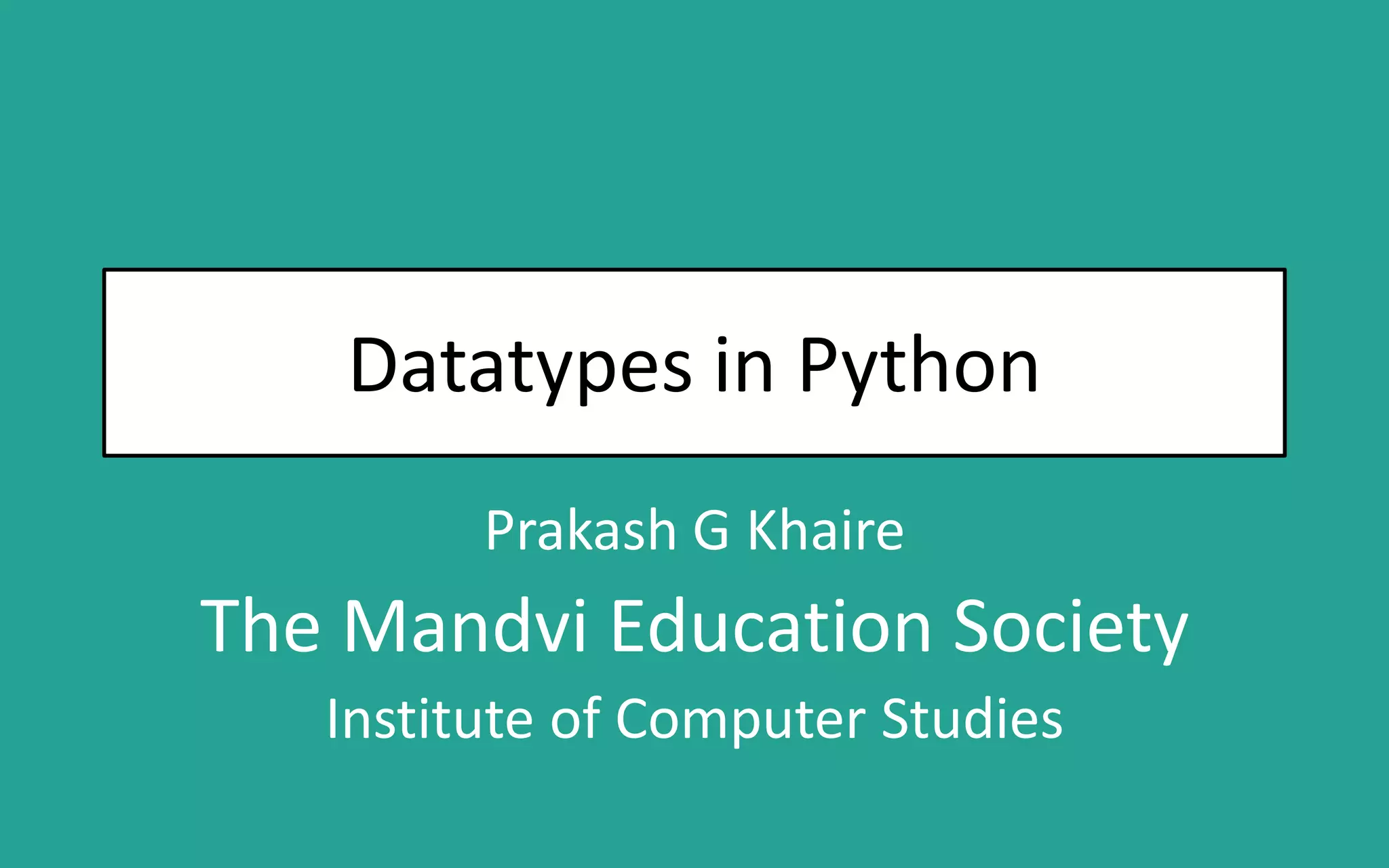
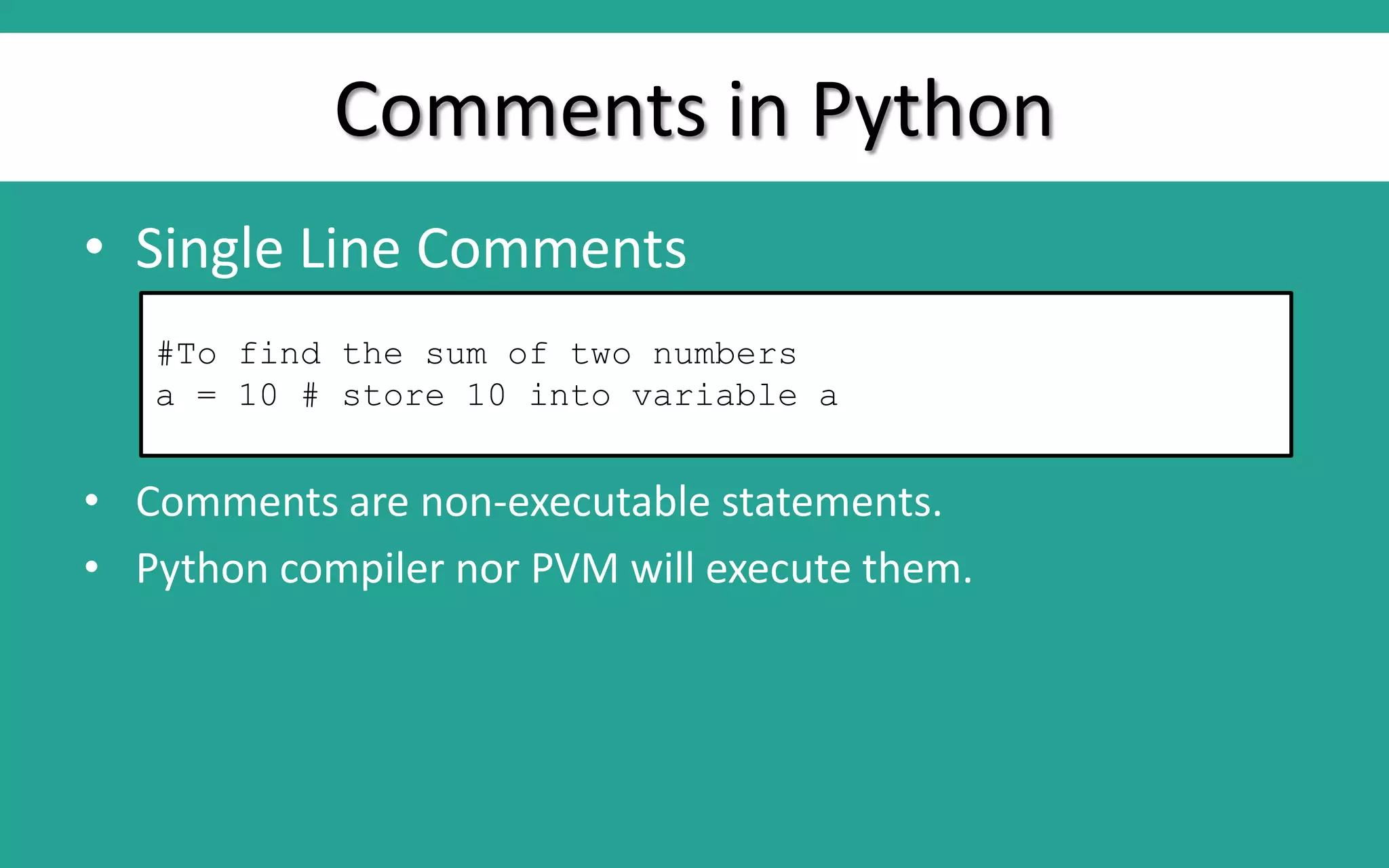
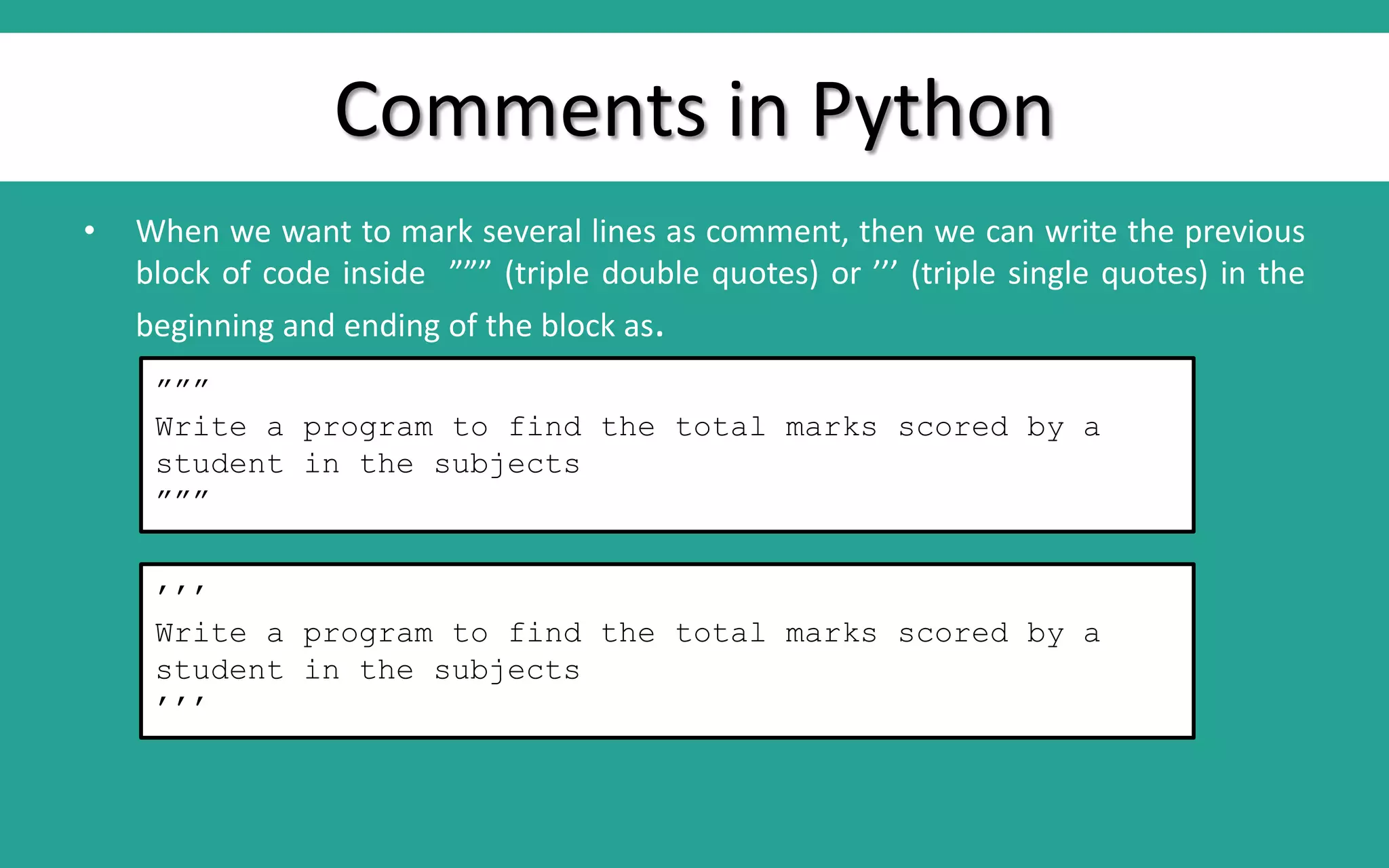
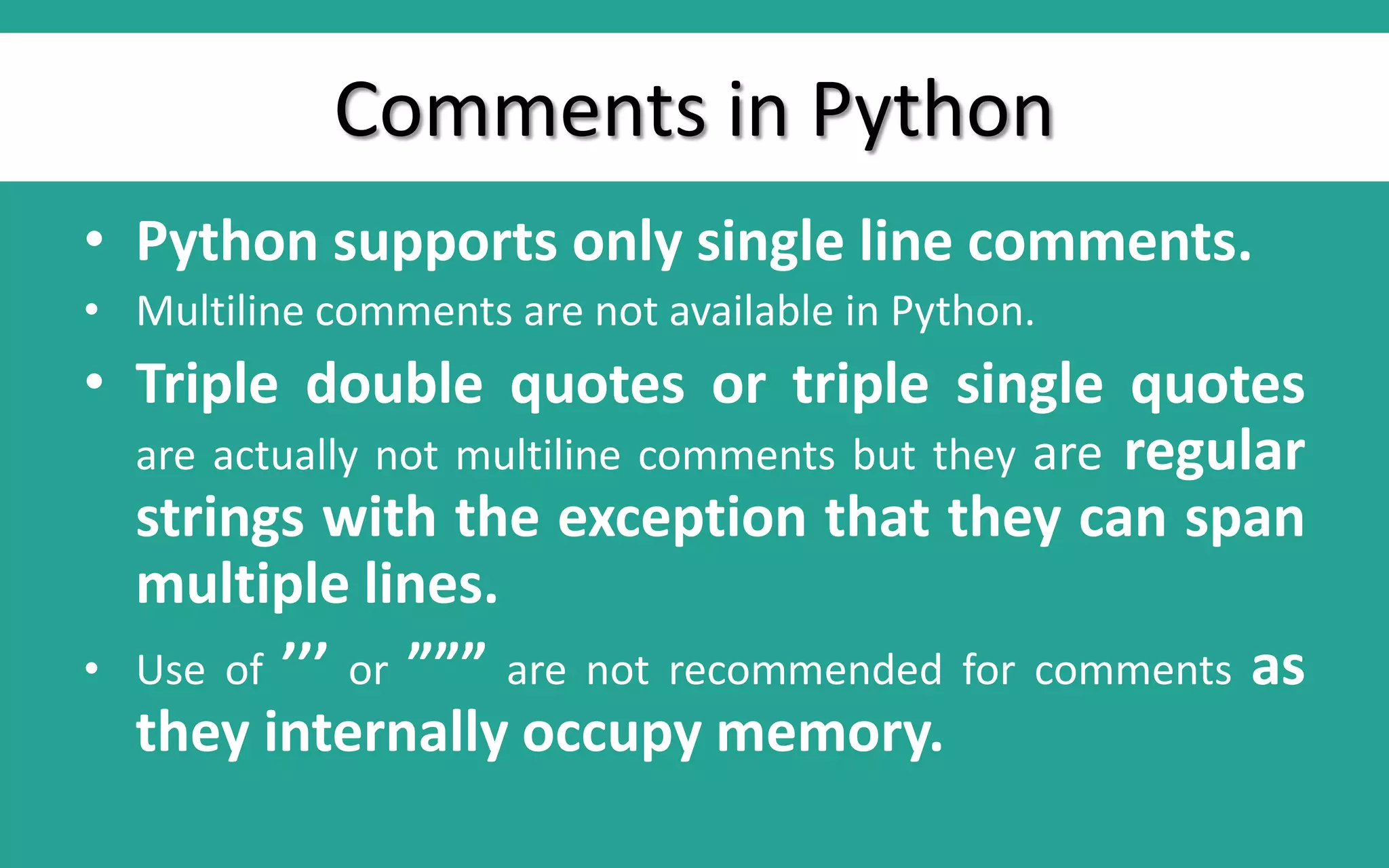

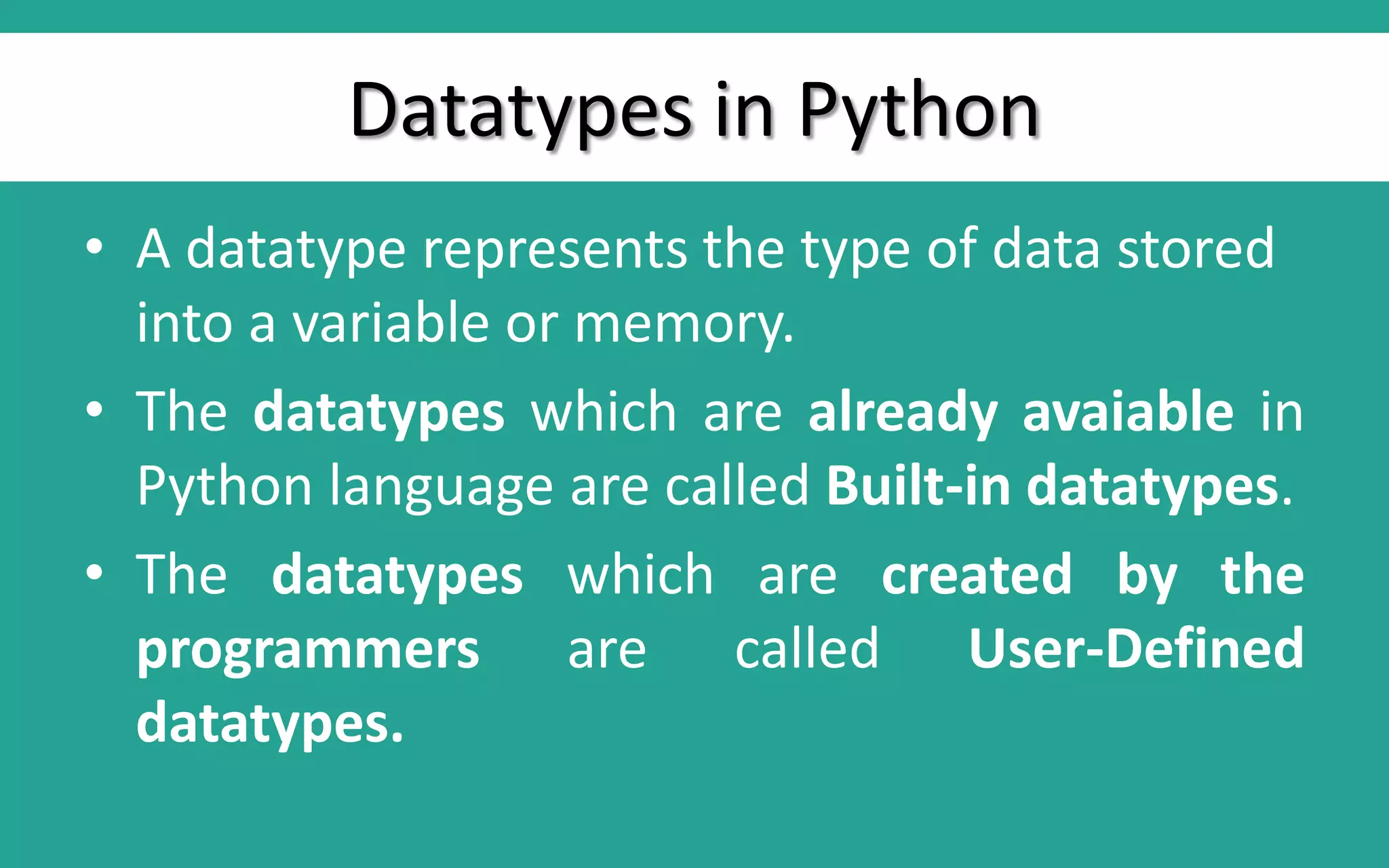
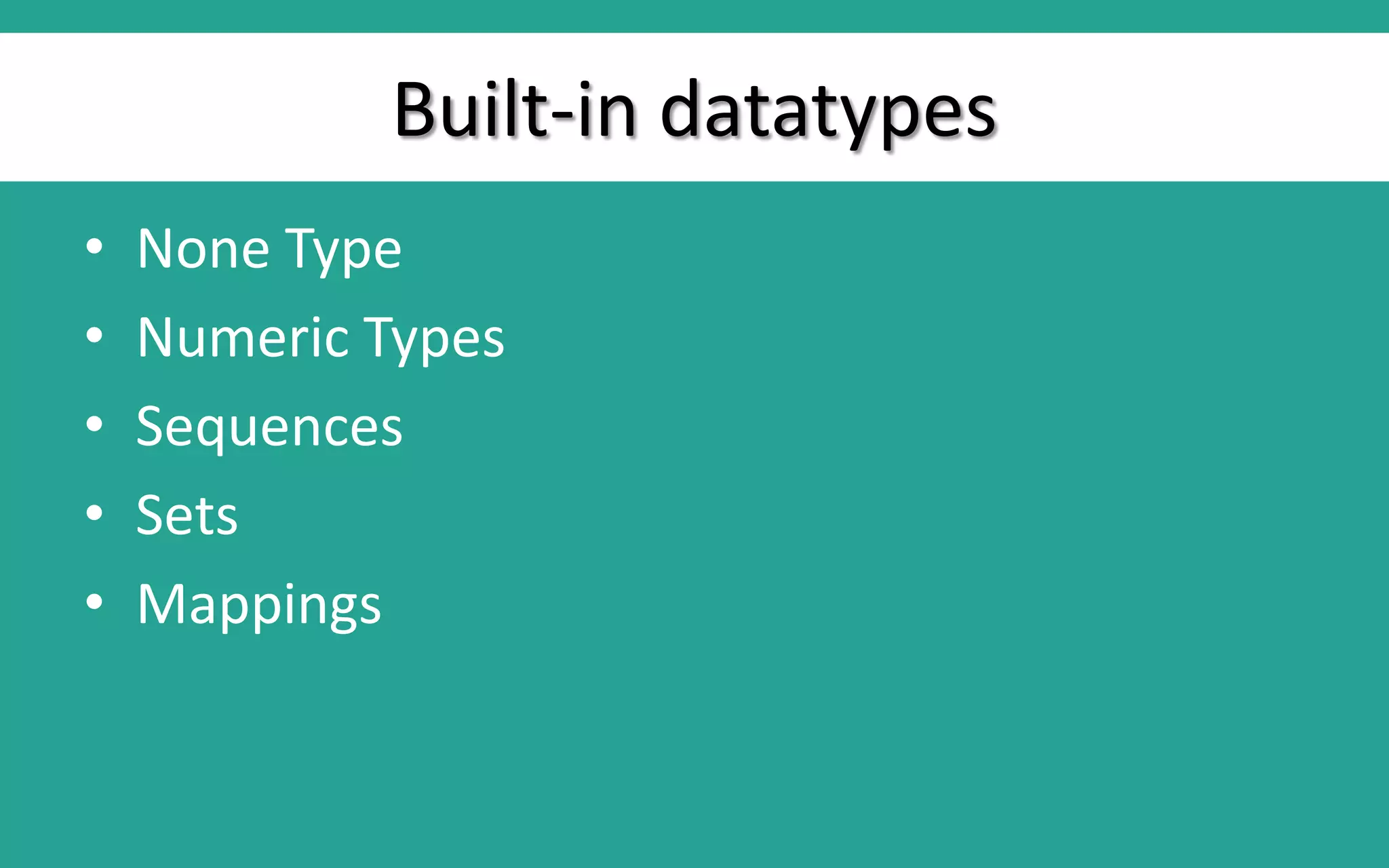

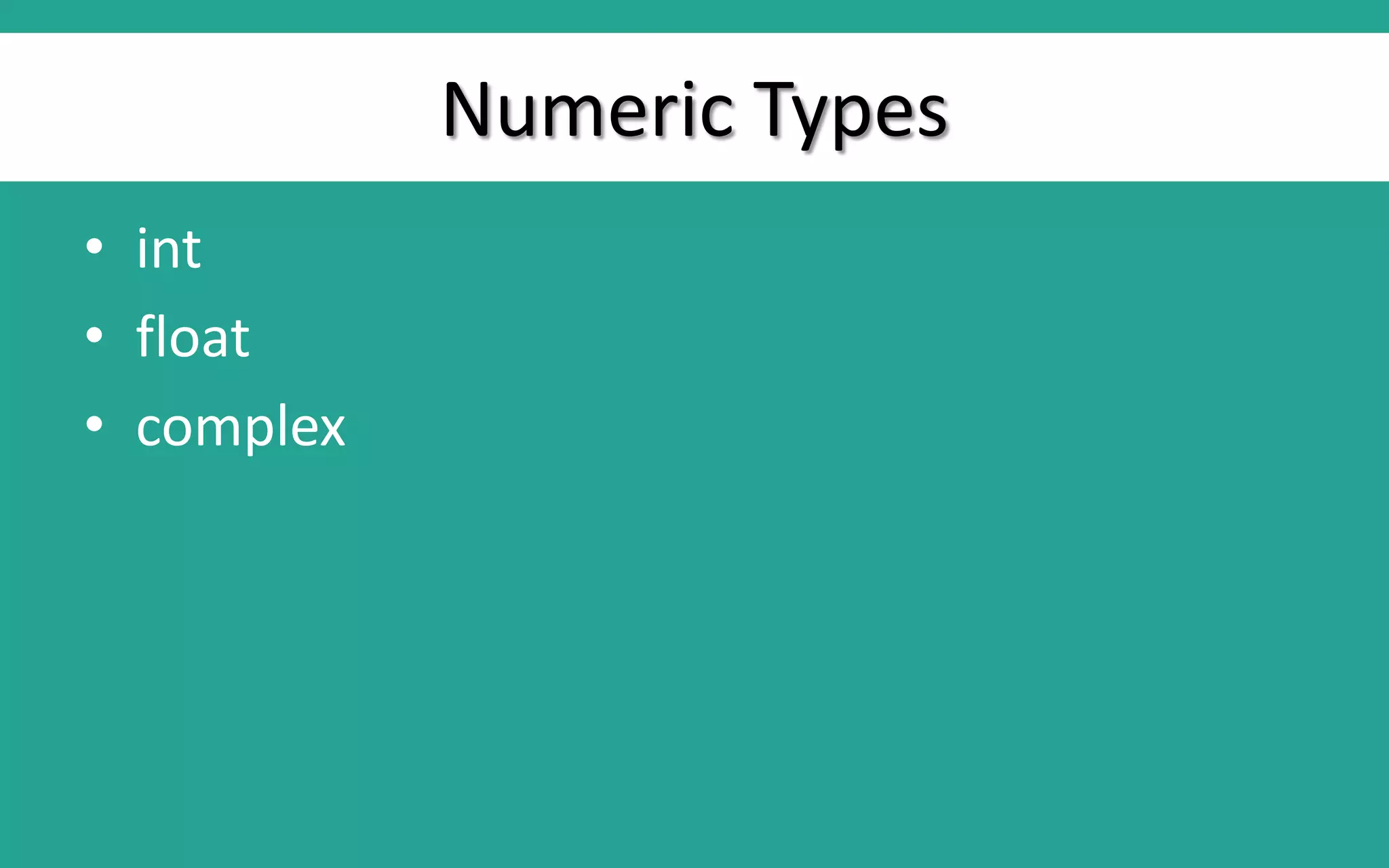
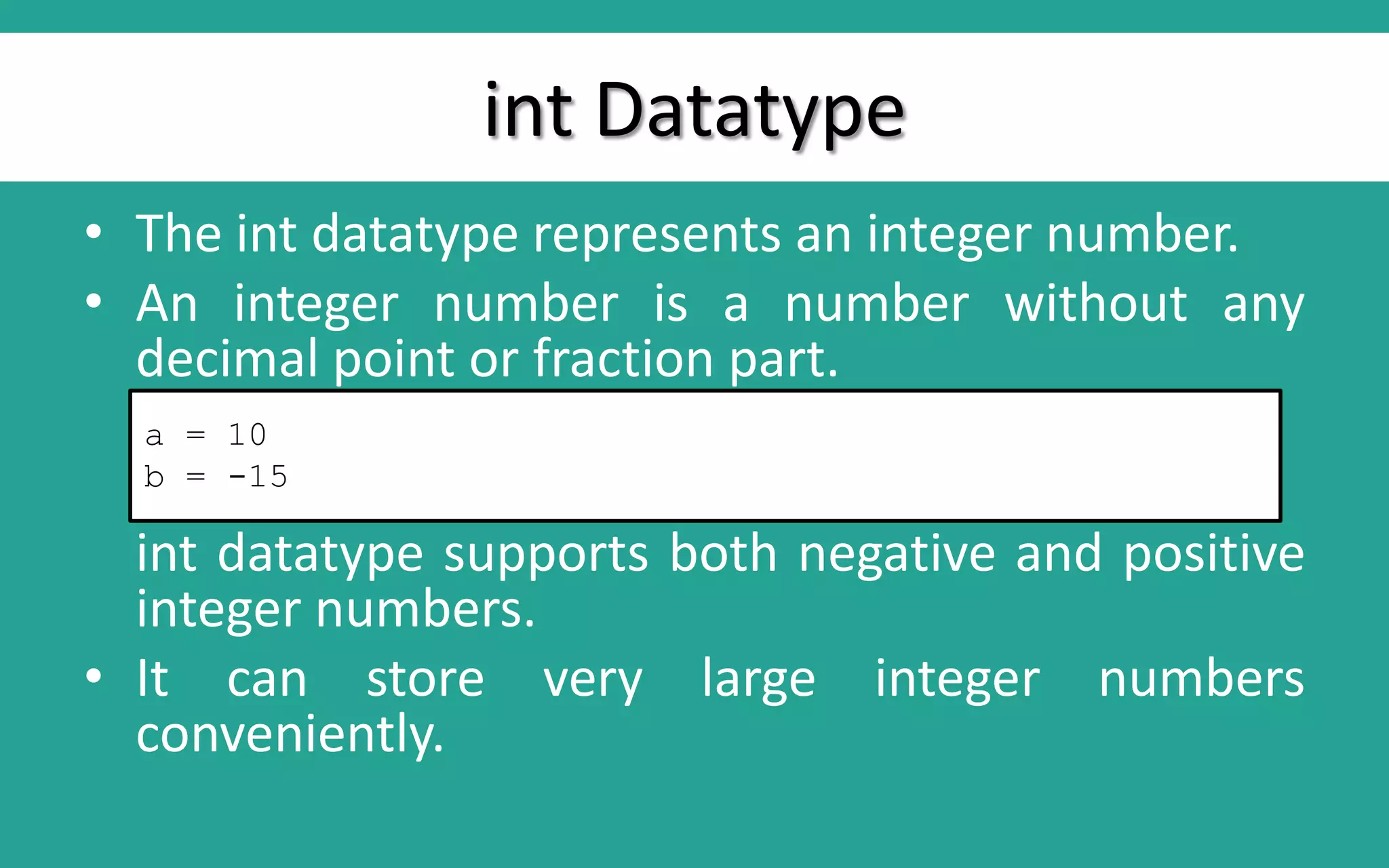
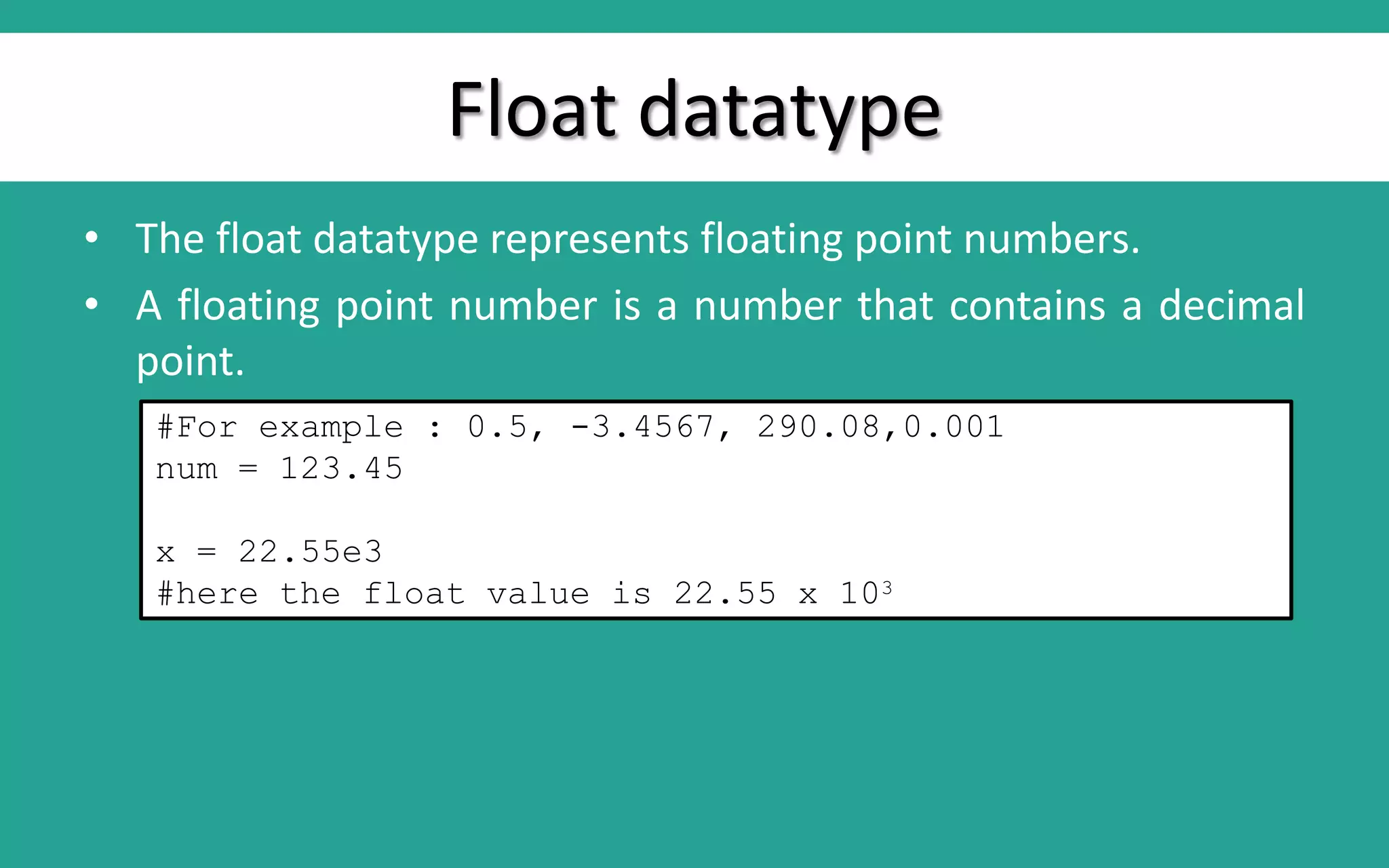
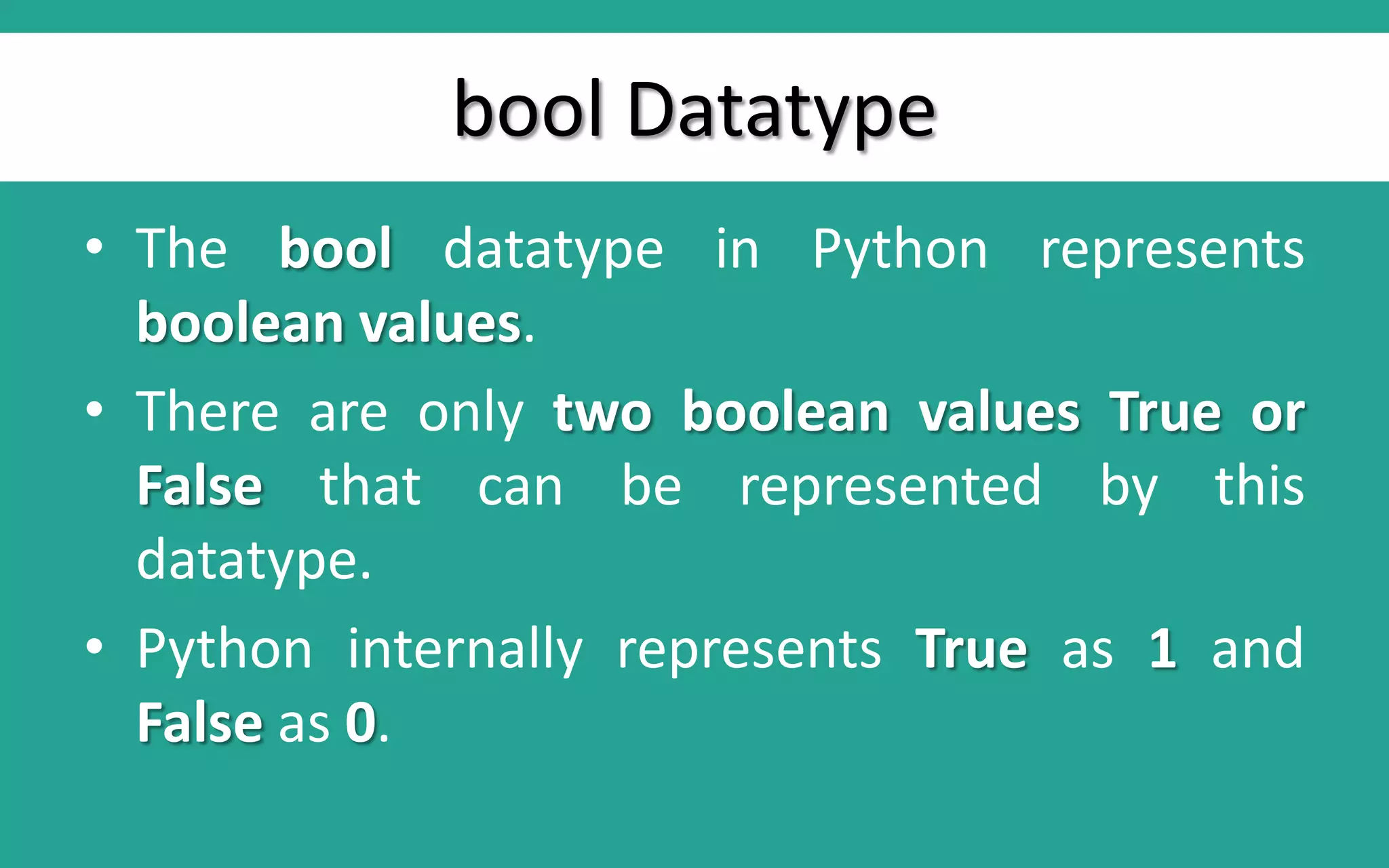

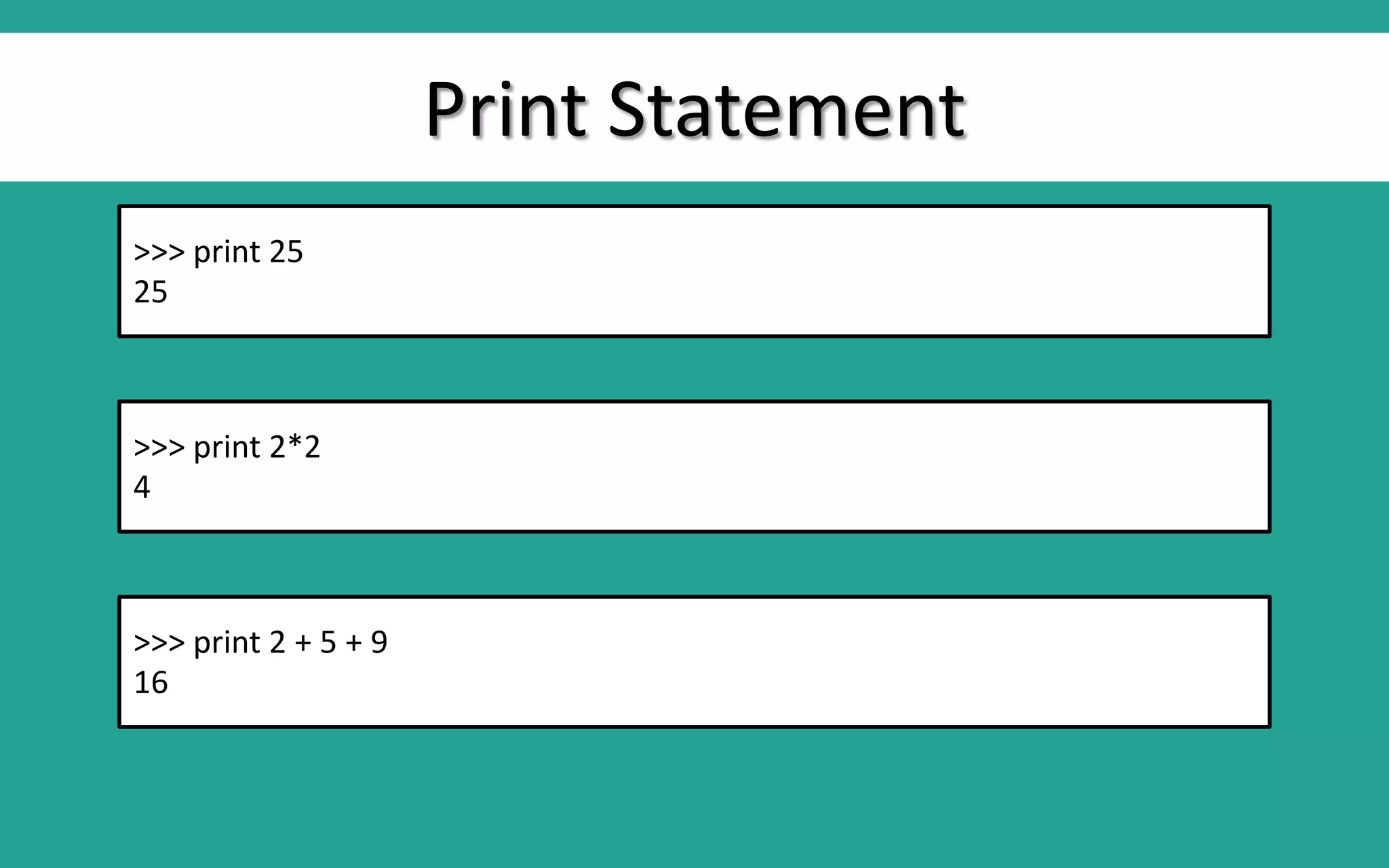
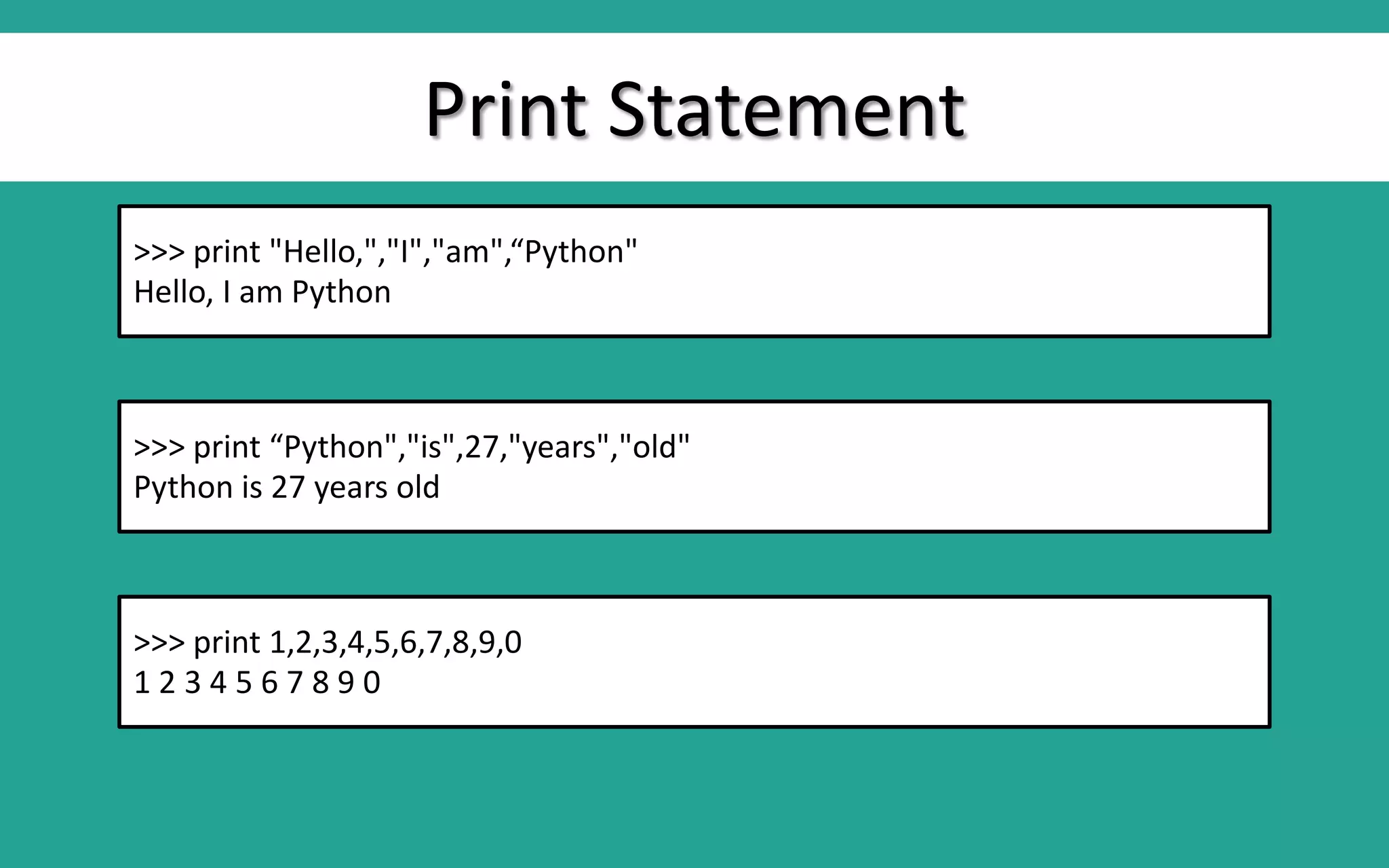
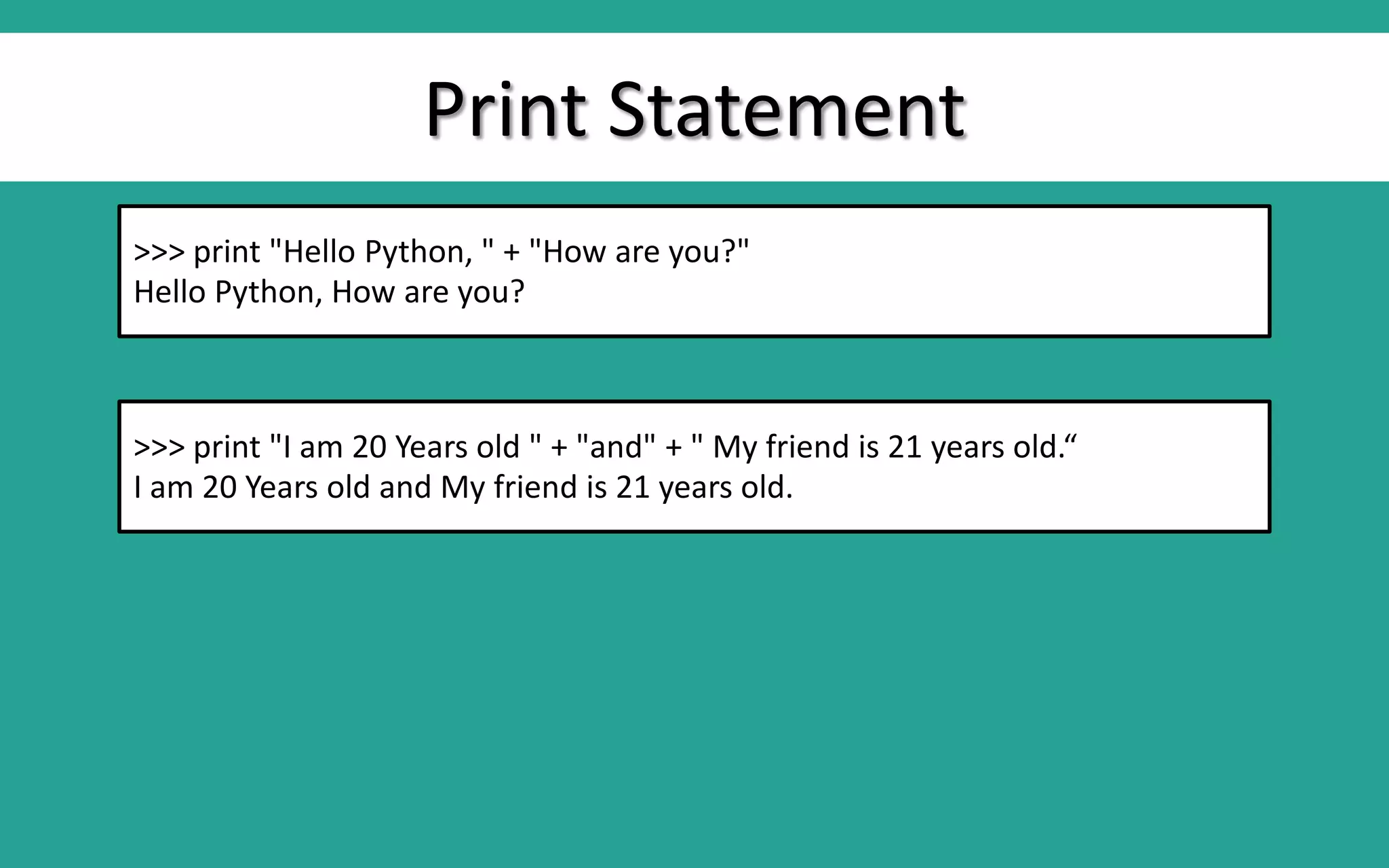
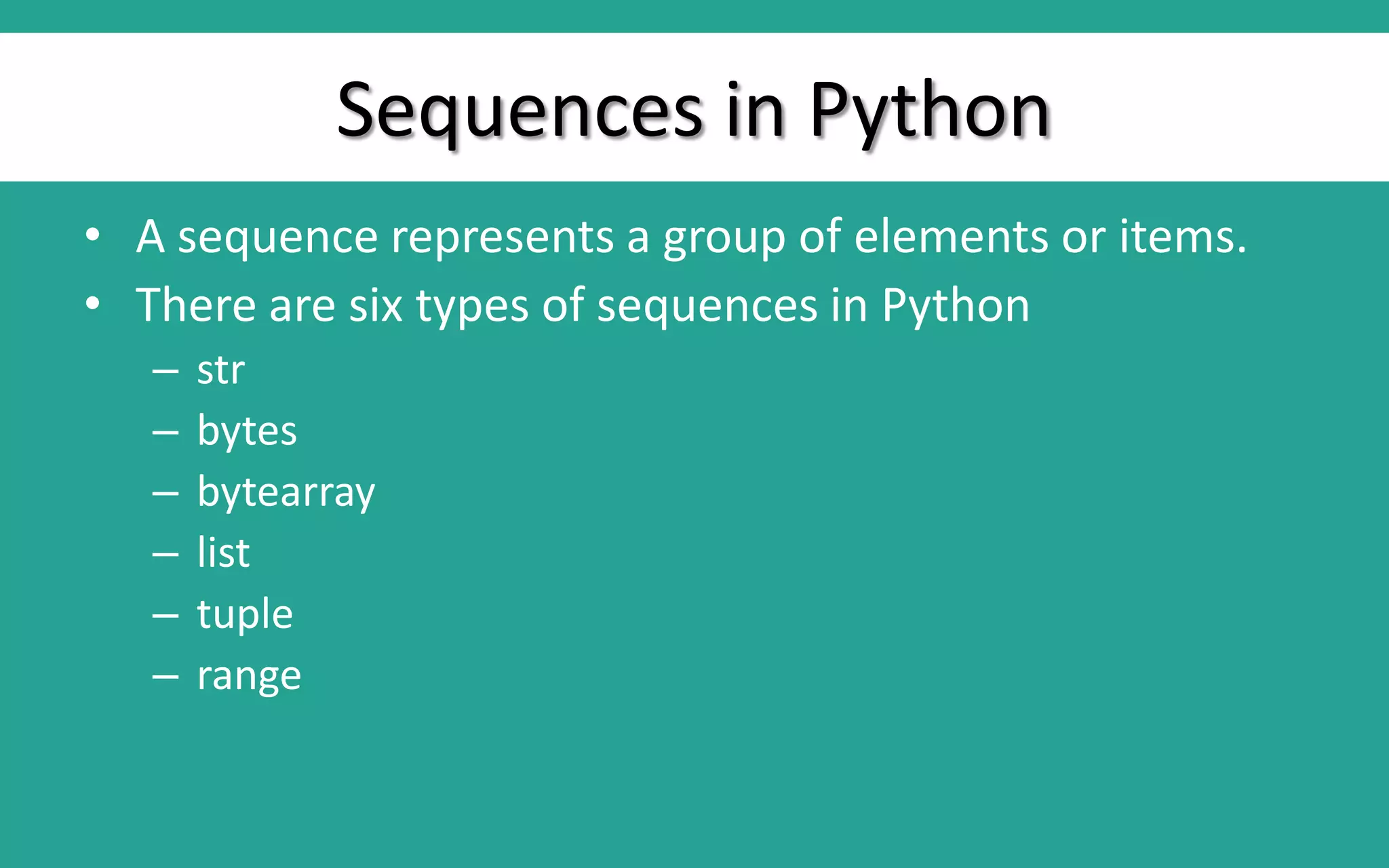
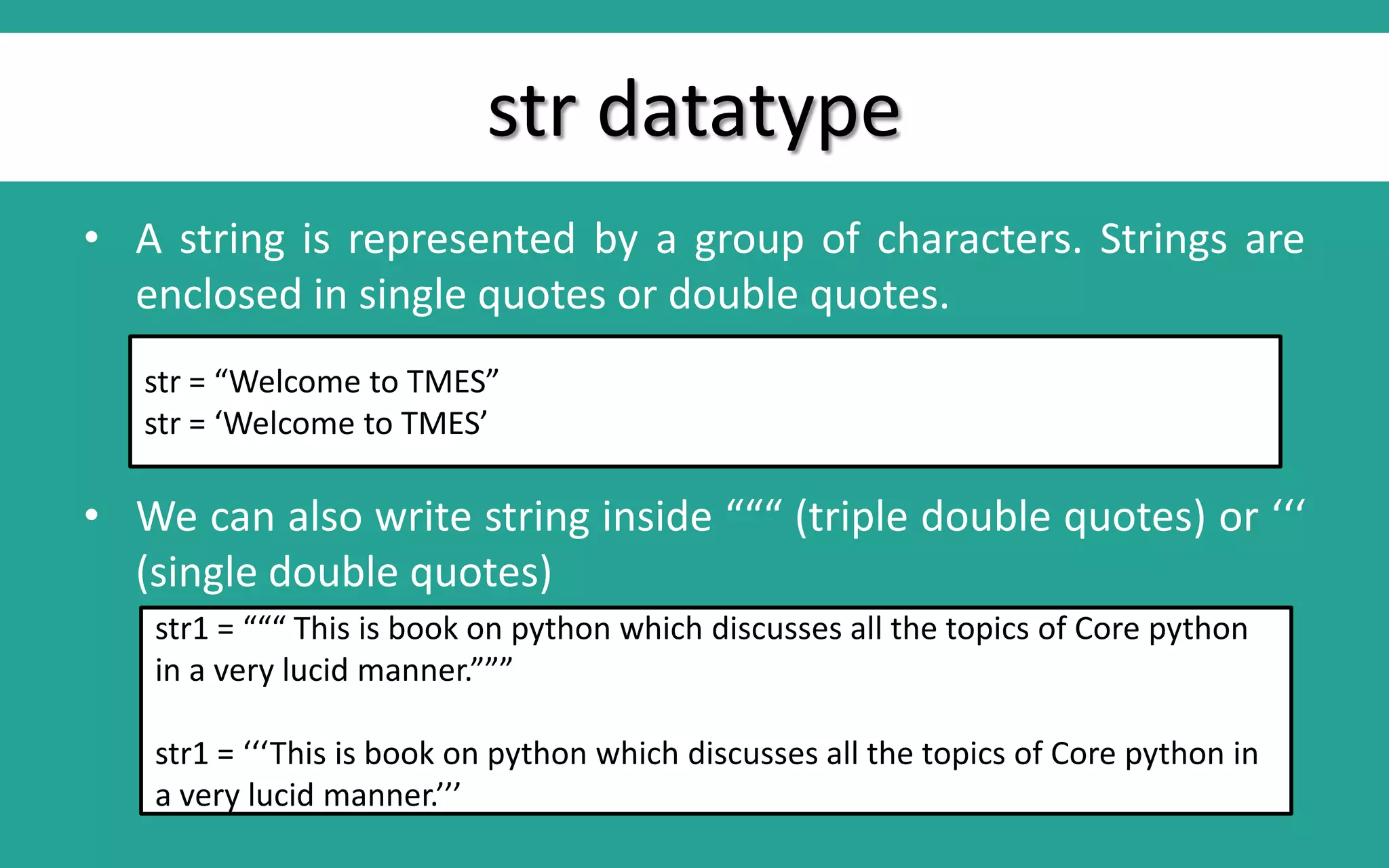
![str datatype
str1 = “““ This is ‘Core Python’ book.”””
print(str1) # This is ‘Core Python’ book.
str1 = ‘‘‘This is ‘Core Python’ book.’’’
print(str1) # This is ‘Core Python’ book.
s = ‘Welcome to Core Python’
print(s[0]) #display 0th character from s
W
print(s[3:7]) #display from 3rd to 6th character
come
print(s[11:]) #display from 11th characters onwards till end.
Core Python
print(s[-1]) #display first character from the end
n](https://image.slidesharecdn.com/datatypesinpython-180919101346/75/Datatypes-in-python-19-2048.jpg)

![bytes Datatype
• A byte number is any positive integer from 0 to
255.
• Bytes array can store numbers in the range from
0 to 255 and it cannot even storage.
• We can modify or edit any element in the bytes
type array.
elements = [10, 20, 0, 40, 15] #this is a list of byte numbers
x = bytes(elements) #convert the list into byte array
print(x[10]) #display 0th element, i.e 10](https://image.slidesharecdn.com/datatypesinpython-180919101346/75/Datatypes-in-python-21-2048.jpg)
![list Datatype
• Lists in Python are similar to arrays in C or Java.
• The main difference between a list an array is that a list can
store different types of elements, but array can store only one
type of elements.
• List can grow dynamically in memory.
• But the size of arrays is fixed and they cannot grow at
runtime.
list = [10, -20, 15.5, ‘vijay’, “Marry”]](https://image.slidesharecdn.com/datatypesinpython-180919101346/75/Datatypes-in-python-22-2048.jpg)
![list Datatype
• The slicing operation like [0:3] represents elements from 0th to
2nd positions. i.e 10,20,15.5
>>>list = [10, -20, 15.5, ‘vijay’, “Marry”]
>>>print(list)
10, -20, 15.5, ‘vijay’, “Marry”
>>> print(list[0])
10
>>>print(list[1:3])
[-20,15.5]
>>>print(list[-2])
vijay
>>>print(list*2)
[ 10, -20, 15.5, ‘vijay’, “Marry” 10, -20, 15.5, ‘vijay’, “Marry”]](https://image.slidesharecdn.com/datatypesinpython-180919101346/75/Datatypes-in-python-23-2048.jpg)
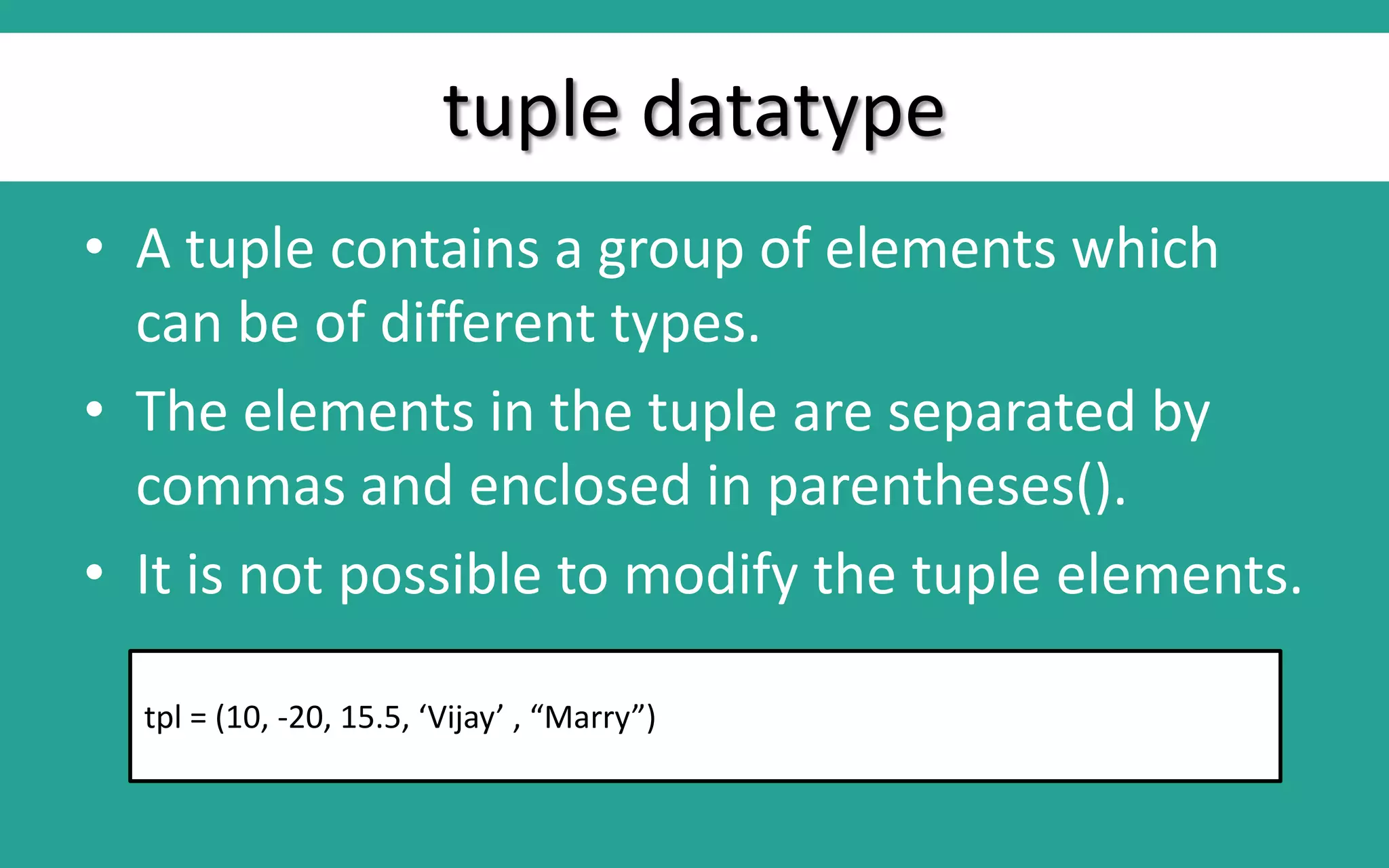
![tuple datatype
>>> tpl = (10,-20,14.5, "Prakash", 'Khaire')
>>> print(tpl)
(10, -20, 14.5, 'Prakash', 'Khaire')
>>> print(tpl[1:3])
(-20, 14.5)
>>> print(tpl[0])
10
>>> print(tpl[-1])
Khaire
>>> print(tpl*2)
(10, -20, 14.5, 'Prakash', 'Khaire', 10, -20, 14.5, 'Prakash', 'Khaire')
>>> tpl[0] = 1
Traceback (most recent call last):
File "<pyshell#6>", line 1, in <module>
tpl[0] = 1
TypeError: 'tuple' object does not support item assignment](https://image.slidesharecdn.com/datatypesinpython-180919101346/75/Datatypes-in-python-25-2048.jpg)
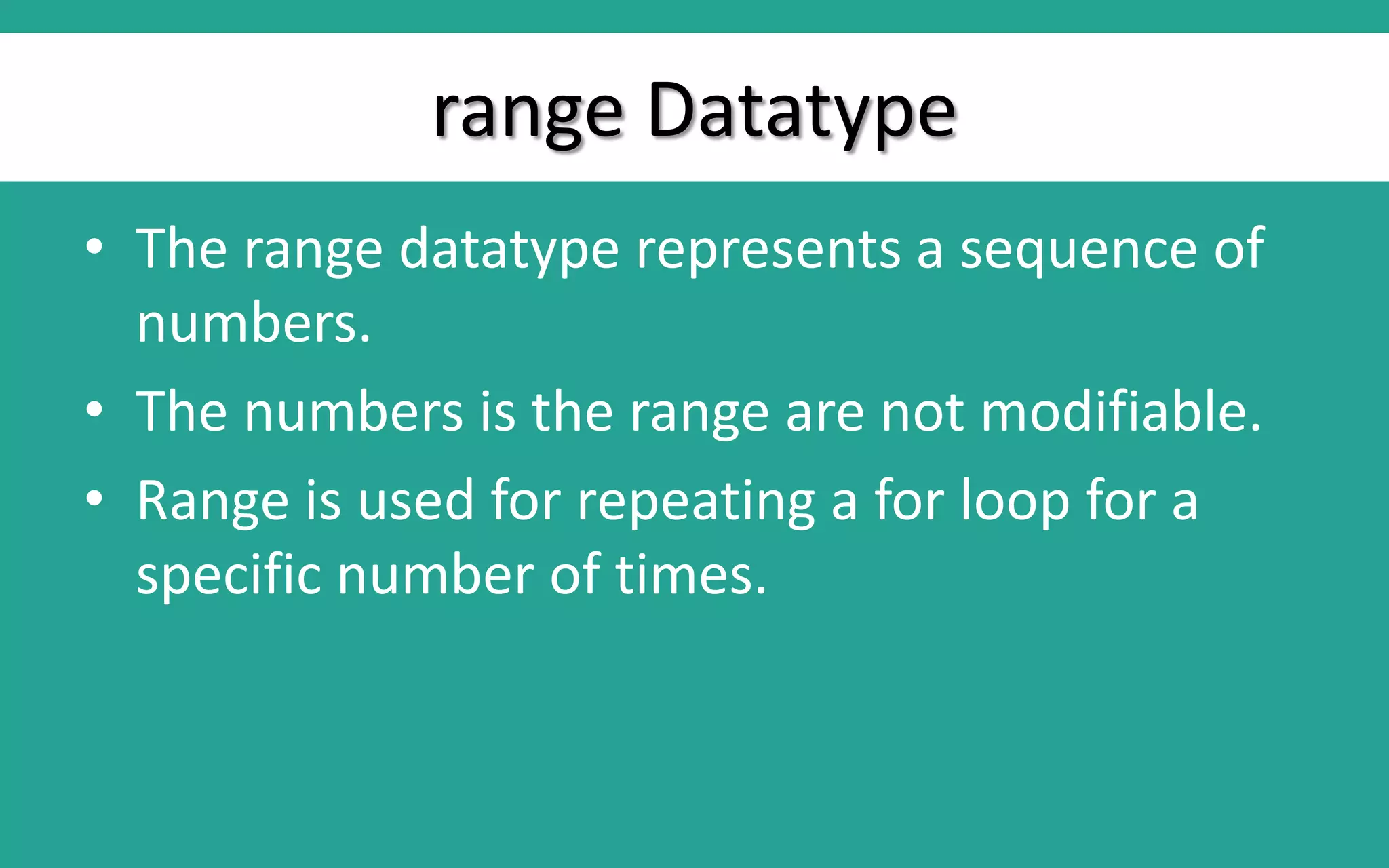
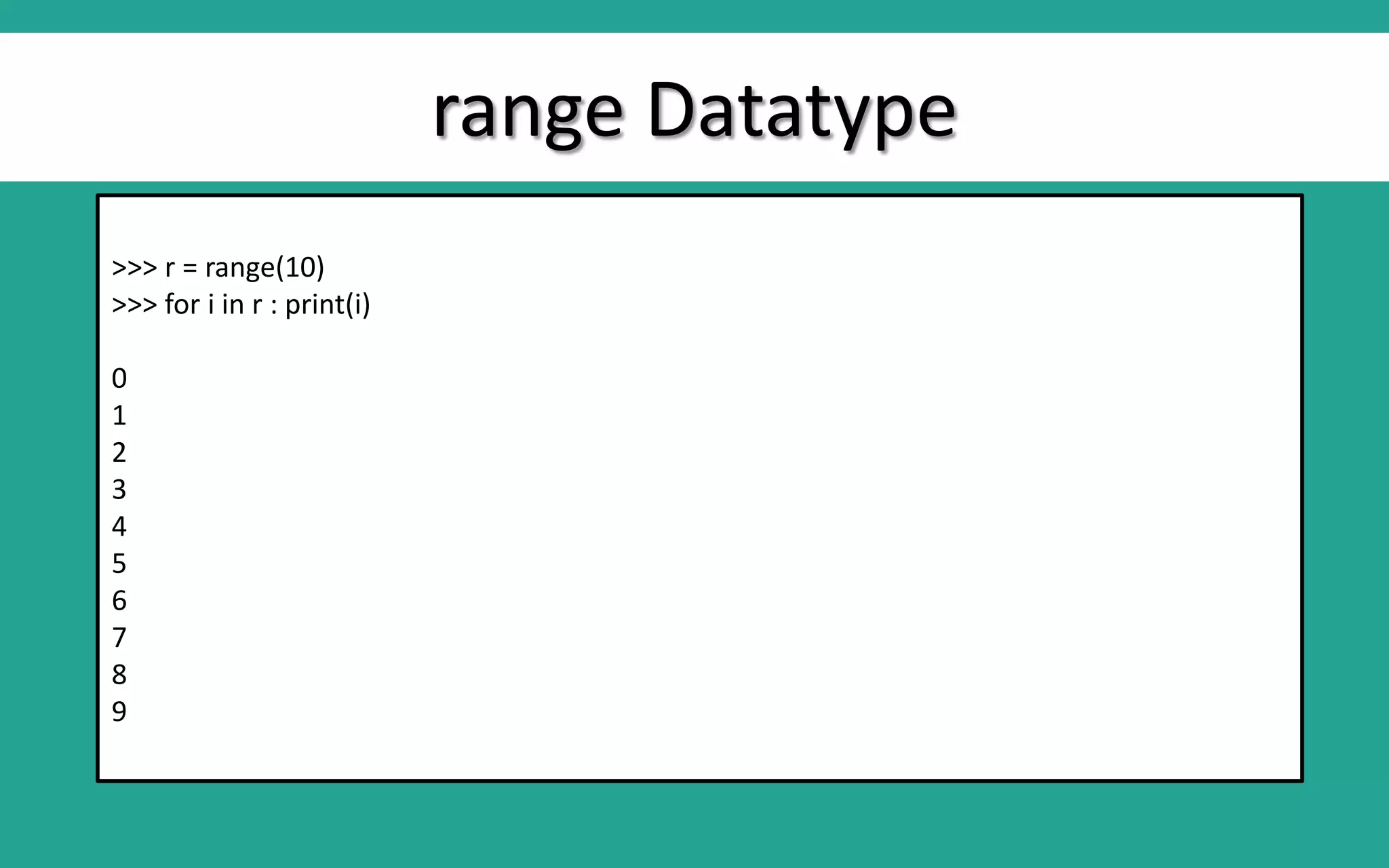
![range Datatype
>>> r = range(30,40,2)
>>> for i in r:print(i)
30
32
34
36
38
>>> lst = list(range(10))
>>>
>>> print(lst)
[0, 1, 2, 3, 4, 5, 6, 7, 8, 9]](https://image.slidesharecdn.com/datatypesinpython-180919101346/75/Datatypes-in-python-28-2048.jpg)
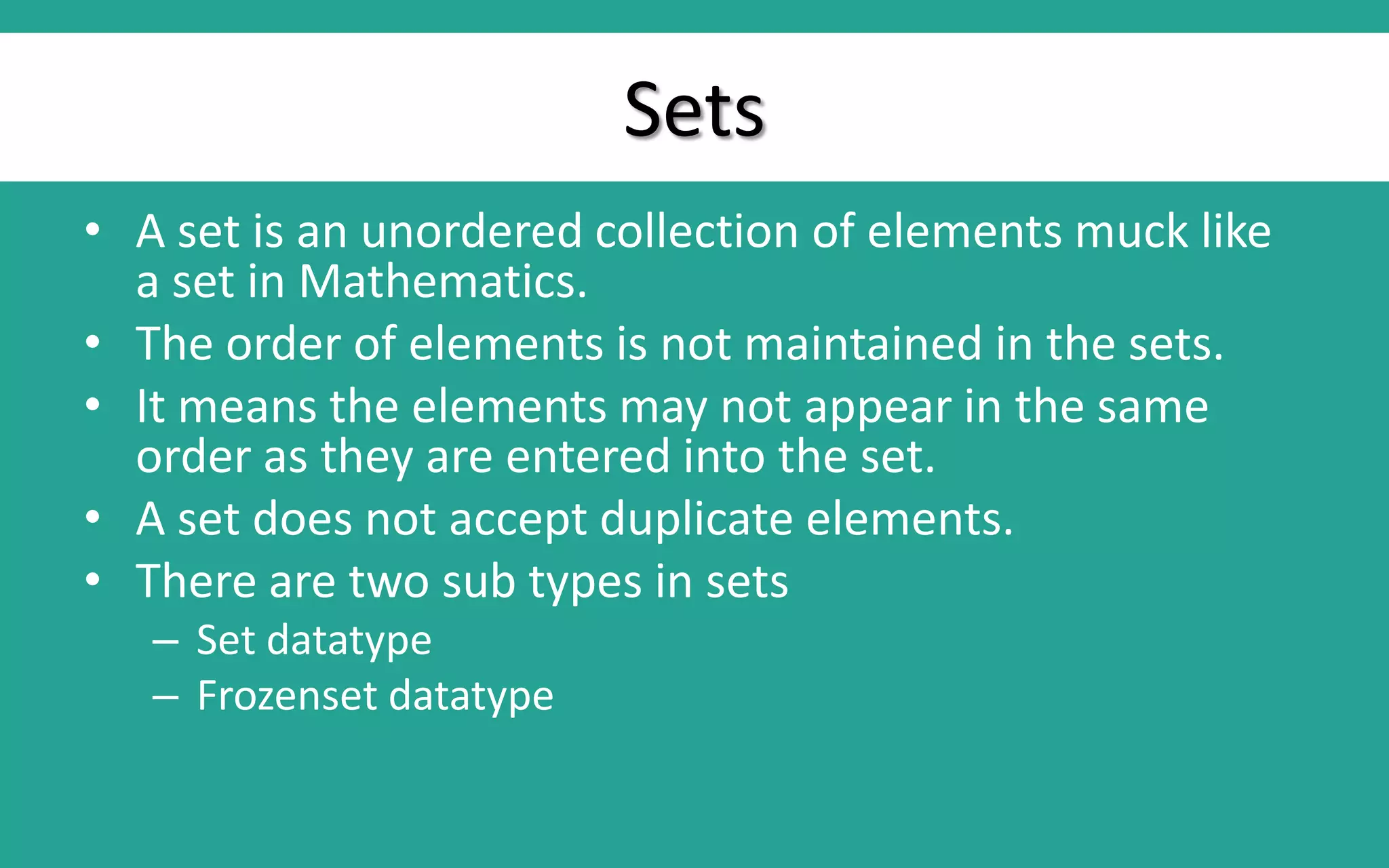
![Sets
• To create a set, we should enter the elements separated by
commas inside curly braces {}.
s = {10, 20, 30, 20, 50}
>>> print(s)
{10, 20, 50, 30}
ch = set("Python")
>>> print(ch)
{'n', 'h', 't', 'o', 'P', 'y'}
>>> lst = [1,2,4,3,5]
>>> s = set(lst)
>>> print(s)
{1, 2, 3, 4, 5}](https://image.slidesharecdn.com/datatypesinpython-180919101346/75/Datatypes-in-python-30-2048.jpg)
![Sets
• To create a set, we should enter the elements separated by
commas inside curly braces {}.
s = {10, 20, 30, 20, 50}
>>> print(s)
{10, 20, 50, 30}
ch = set("Python")
>>> print(ch)
{'n', 'h', 't', 'o', 'P', 'y'}
>>> lst = [1,2,4,3,5]
>>> s = set(lst)
>>> print(s)
{1, 2, 3, 4, 5}](https://image.slidesharecdn.com/datatypesinpython-180919101346/75/Datatypes-in-python-31-2048.jpg)
![Sets
>>> print(s[0])
Traceback (most recent call last):
File "<pyshell#7>", line 1, in <module>
print(s[0])
TypeError: 'set' object does not support indexing
>>> s.update([110,200])
>>> print(s)
{1, 2, 3, 4, 5, 200, 110}
>>> s.remove(4)
>>> print(s)
{1, 2, 3, 5, 200, 110}](https://image.slidesharecdn.com/datatypesinpython-180919101346/75/Datatypes-in-python-32-2048.jpg)
